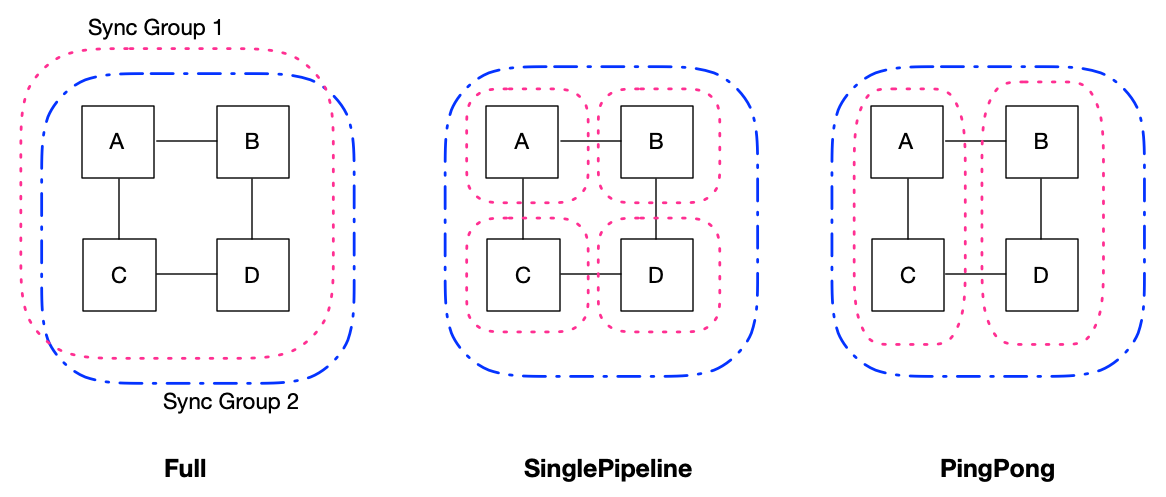7. Performance optimisation
7.1. Sync configuration
In a multi-IPU system, synchronisation (sync) signals are used to ensure that IPUs are ready to exchange data and that data exchange is complete. These sync signals are also used to synchronise host transfers and access to remote buffers.
Each IPU can be allocated to one or more “sync groups”. At a synchronization point, all the IPUs in a sync group will wait until all the other IPUs in the group are ready.
Sync groups can be used to to allow subsets of IPUs to overlap their operations. For example, one sync group can be performing data transfers to or from the host, while another group is processing a previous batch of data.
You can configure the sync groups using the PopART syncPatterns option
when creating a device.
For example, the following code shows how to set the sync configuration to “ping-pong” mode.
sync_pattern = popart.SyncPattern.Full
if args.execution_mode == "PHASED":
sync_pattern = popart.SyncPattern.ReplicaAndLadder
device = popart.DeviceManager().acquireAvailableDevice(
request_ipus,
pattern=sync_pattern)
7.1.1. Sync patterns
There are three sync patterns available. These control how the IPUs are allocated to the two sync groups, GS1 and GS2.
The sync patterns are described with reference to the diagram below, which shows four IPUs: A, B, C and D.

Fig. 7.1 Sync patterns
Full: All four IPUs are in both sync groups. Any communication between the IPUs or with the host, will require all IPUs to synchronise.
SinglePipeline: One sync group contains all four of the IPUs. So any communication using that sync group will synchronise all the IPUs.
The other sync group is used separately by each IPU. This means that they can each sync with the host independently, without syncing with each other. This allows any IPU to be doing host IO, for example, while others are processing data.
ReplicaAndLadder: One sync group contains all the IPUs. The other sync group is used independently by sets of IPUs, for example A+C and B+D. This means that each subset can communicate independently of each other. The two groups of IPUs can then alternate between host I/O and processing.
For more information on how the sync groups are used by the Poplar framework, please refer to the Poplar and PopLibs User Guide.